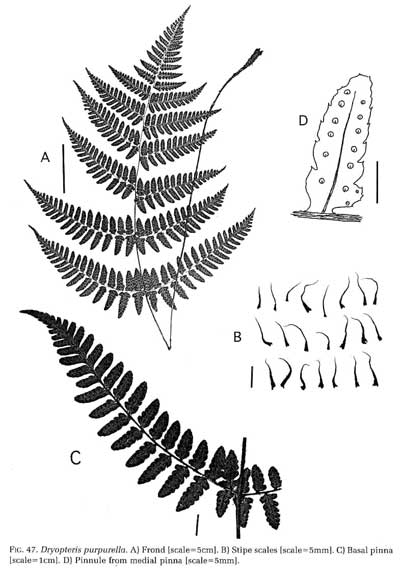| Dryopteris purpurella | ||
|
Etymology
Purpurella is a form of the word which means purple.
Description
Rhizome: short-creeping.
Frond: 75 cm high by 35 cm wide, evergreen, monomorphic, blade/stipe ratio: 3:2. Stipe: grooved, purplish, scales narrow triangular, brown and black or all greenish to 7.5 mm, vascular bundles: 3-7 in a c-shaped pattern. Blade: 2-pinnate, triangular, young fronds bronze, mature ones pale green, stiff-herbaceous, rachis and costa reddish purple. Pinnae: 12 to 14 pair, 6 pinnate pinnae, well-spaced, then pinnatifid to the apex; costae grooved above, continuous from rachis to costae; margins margins entire, crenate, or serrate, spinulose or not; veins free, forked. Sori: round, submarginal, indusium: reniform, whitish-tan and faintly pink at the center, at a sinus, sporangia: brownish. Culture
Habitat: on rather wet forest floor in mountainous areas.
Distribution: Japan, Korea, China.
Hardy to -25�C, USDA Zone 5.
Distinctive Characteristics
bronze coloration on young fronds
Synonyms
Dryopteris erythrosora (D. C. Eaton) Kuntze var. purpurascens H. It� Dryopteris indusiata (Makino) Makino et Yamam. ex Yamam. var. purpurascens (H. It�) Sa. Kurata |
|
|
